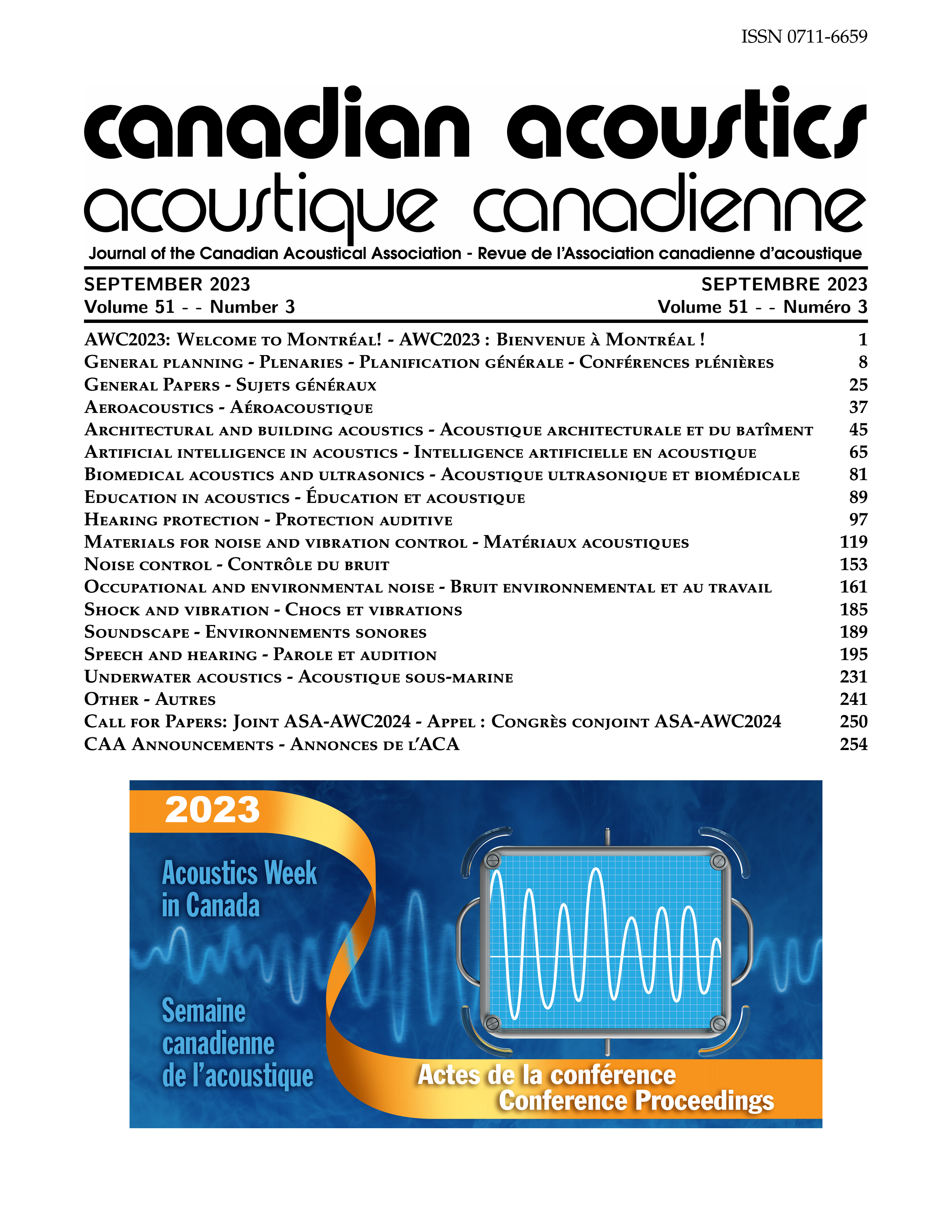A 3D Voice-Hearing Simulator Co-Created by Voice Hearers and Researchers: Preliminary Sound Quality Evaluation
Abstract
Voice hearing (VH) is a phenomenon that can affect a wide range of people, not just those affected by psychosis, schizophrenia or any mental health trouble. The heard voices can be positive, negative, or anything in between. VH is distinctive in that the voices can both come from inside the head or from the external world (i.e. the sound environment, or the body), resulting in a sense of sound externalization. Improper mental health services or social support are often reported by voice hearers. One hypothesis is that service providers lack empathy and appropriate knowledge about the experience of voice hearers, potentially leading to a reduced therapeutic alliance. To address this, a 3D voice-hearing simulator (3DV) was created within a participatory research paradigm with a multidisciplinary team. The main objective being the creation of an experiential knowledge sharing tool for the training of future psychiatrists or social workers. Simple binaural sound reproduction was used to recreate the sense of externalization. A validation of its effect was performed using quantitative and qualitative evaluation on social work students. Preliminary results suggest that the 3DV was efficient in sharing the VH experience for both voice hearers and participants. Hence, one of the strong successes of the project was in the inclusion of voice hearers as non-traditional research collaborators with experiential knowledge. However, in terms of limitation, it was difficult for participants, considered as naive listeners with respect to audio technologies, to distinguish the sound quality of different 3DV versions (binaural, stereophonic, and binaural based on ambisonics). This is possibly due to the strong and impactful nature of the 3DV and the words per se. To improve the immersion of 3DV, full immersive and interactive binaural audio with head-tracking or augmented reality may be necessary. This project received an ethics certificate from UQAM and financial support from FRQ Audace.Additional Files
Published
How to Cite
Issue
Section
License
Author Licensing Addendum
This Licensing Addendum ("Addendum") is entered into between the undersigned Author(s) and Canadian Acoustics journal published by the Canadian Acoustical Association (hereinafter referred to as the "Publisher"). The Author(s) and the Publisher agree as follows:
-
Retained Rights: The Author(s) retain(s) the following rights:
- The right to reproduce, distribute, and publicly display the Work on the Author's personal website or the website of the Author's institution.
- The right to use the Work in the Author's teaching activities and presentations.
- The right to include the Work in a compilation for the Author's personal use, not for sale.
-
Grant of License: The Author(s) grant(s) to the Publisher a worldwide exclusive license to publish, reproduce, distribute, and display the Work in Canadian Acoustics and any other formats and media deemed appropriate by the Publisher.
-
Attribution: The Publisher agrees to include proper attribution to the Author(s) in all publications and reproductions of the Work.
-
No Conflict: This Addendum is intended to be in harmony with, and not in conflict with, the terms and conditions of the original agreement entered into between the Author(s) and the Publisher.
-
Copyright Clause: Copyright on articles is held by the Author(s). The corresponding Author has the right to grant on behalf of all Authors and does grant on behalf of all Authors, a worldwide exclusive license to the Publisher and its licensees in perpetuity, in all forms, formats, and media (whether known now or created in the future), including but not limited to the rights to publish, reproduce, distribute, display, store, translate, create adaptations, reprints, include within collections, and create summaries, extracts, and/or abstracts of the Contribution.


